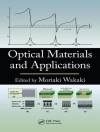Molecular chaperones are critical to control protein quality in all living cells. Understanding chaperone function at the atomic level, and in particular its mode of interaction with client proteins, is crucial to understanding the fundamental roles chaperones play in biology. This book fills a gap in the literature by comprehensively summarizing and discussing new advanced experimental techniques for their analysis. Providing a comprehensive overview of advanced biophysical methods for the characterization of molecular mechanisms of molecular chaperones, the majority of the contributions are NMR methodology. This is the method of choice for atomic resolution studies of such systems. Additional notable biophysical approaches are considered to present all relevant current developments in exploring chaperone function and the transient and dynamic interactions with their client proteins.
The book is targeted at both current practitioners of structural biology and biophysical chemistry and scientists who are interested in entering the field. It could be useful for graduate students as supplementary reading.
قائمة المحتويات
Introduction: Molecular Chaperones and Protein Quality Control;Structural Disorder in Chaperone Functions Probed by NMR;Solution NMR Approaches for Studying Molecular Chaperones;Solution NMR Studies of Chaperone–Client Systems;Preparing Chaperone–Client Protein Complexes for Biophysical and Structural Studies;NMR Study of Structure and Dynamics of Chaperone–Client Complexes;Single Molecule Fluorescence Methods for Molecular Chaperones and their Client Interactions;Visualization of Chaperone Mediated Protein Folding Using X-ray Crystallography;Studying Molecular Chaperones and their Client Interactions by Nanometer Distance Restraints from Electron Paramagnetic Resonance Spectroscopy;EPR Studies of Chaperone Interactions and Dynamics;Probing Single Chaperone Substrates;Integrative Methods to Investigate Chaperones in Regulating Protein Phase Separation and Aggregation;Structural Biology in Cells by In-cell NMR












